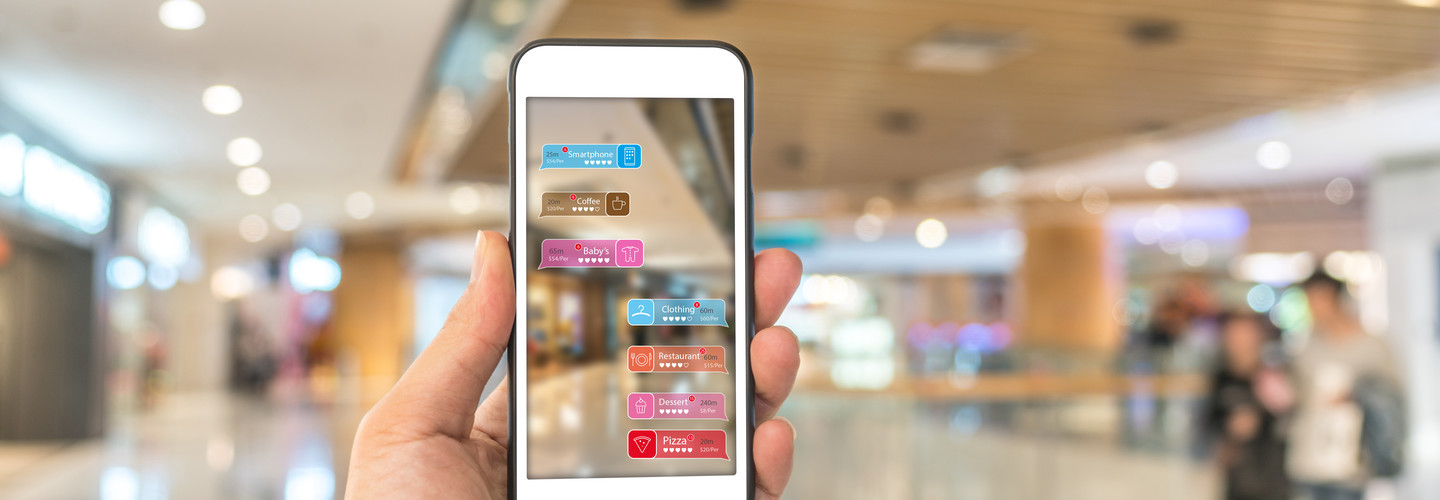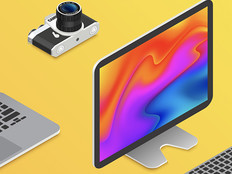Retailers Build New Customer Experiences with AR
Technology has often been seen as more of a threat than an opportunity by traditional retailers, as digital-native brands, from Amazon to Zulily, have eaten away at market share and challenged brick-and-mortar stores to innovate.
But one emerging technology is being seen as an opportunity for retailers to deliver new customer experiences that will in some cases bring more shoppers to their stores; and in others, make the at-home purchase more personal.
That technology is augmented reality. And thanks in part to Apple’s ARKit and Google’s ARCore — tools that launched about a year ago, that enable developers to build AR experiences on the most popular devices — thousands of retailers are now experimenting with innovative AR experiences, and millions of consumers are enjoying them.
“AR enhances physical spaces with digital tools, or transmits physical reality into the digital world,” notes PYMNTS.com in a recent report on the state of AR in retail. “As such, AR applications are uniquely positioned to bridge the gap between brick-and-mortar and online stores, allowing shoppers to engage with both at once.”
Augmented reality is on the cusp of an explosion: In 2017, the global AR market was valued at just $1.43 billion, but in the next five years it could approach $13 billion, according to Orbis Research.
Here are a few innovative examples of how retailers are deploying AR to build new customer experiences:
DOWNLOAD: Explore more mobility strategies by reading "The Connected Retailer IT Guide."
Retailers Use AR to Create New In-Store Experiences
A number of store brands, especially apparel and cosmetic retailers, are using AR to reinvent the mirror. For example, in some stores, Timberland allows consumers to virtually try on different articles of clothing without heading into a changing room; shoppers view themselves on a screen, select different looks they’d like to try, and technology does the rest.
Then there is the “magic mirror” deployed by cosmetics retailer Charlotte Tilbury. This AR technology scans a customer’s face, then displays images of the customer wearing as many as 10 different makeup looks.
Other retailers are building mobile apps that consumers use in-store. Using the Lacoste AR mobile app, customers can simply point their phone at select products on display to try them on virtually.
Aware that its customers often spend time searching in vain for the right products, home improvement superstore Lowe’s developed an in-store navigation app that directs them to the right aisle.
“Our research shows that helping make it easier for customers to find products in stores not only makes for a better shopping experience, it allows our associates to spend more time advising on home improvement projects,” said Kyle Nel, founder and former executive director of Lowe’s Innovation Labs.
The technology leverages Google’s Tango AR technology to create a virtual version of select stores, guiding customers step by step to products they’ve added to a shopping list in the app.
How AR Brings In-Store Shopping to Customers' Homes
The Lowe’s Vision app does more than guide customers to products in stores. It also helps them select the right products at home, allowing customers to superimpose product images virtually on their own spaces so they can see what it will look like when it’s there in real life.
Lowe’s is not the only retailer of home goods that’s using AR and VR to help customers see how their products would look and fit in their homes. Furniture retailers in particular are taking full advantage of the technology, recognizing that customers often dawdle about making purchases because they’re not sure if what looks good in the store will look good in, say, their living room.
Using Ikea’s Place app, furniture shoppers can post a true-to-scale digital version of thousands of Ikea’s products in the rooms where they might place them.
“You see the scene as if these objects were real and you can walk around them and interact with them, even leave the room and come back. It’s really magic to experience,” says Michael Valdsgaard, until recently Ikea’s head of digital transformation. “We found out through research that some customers weren’t confident about buying. So this is aimed at making that experience easier for them.”
Pottery Barn and Wayfair have also deployed similar AR-powered try-before-you-buy apps for furniture shoppers.
Some Retailers Use AR in Branding Campaigns
While many are delivering new customer experiences using AR, some retailers are also experimenting with the technology to build brand awareness. Shoe company Airwalk, for example, used a combination of AR and geolocation to create what it called “the world’s first invisible pop-up stores.” Customers hoping to buy the new Airwalk Jim could do so only by locating the store using Airwalk’s app.
Gimmicky? Sure, but it worked, providing the company $5 million in earned media, and the busiest weekend so far for its e-commerce store, according to Shopify.









